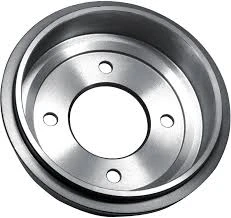
-
 Afrikaans
Afrikaans -
 Albanian
Albanian -
 Amharic
Amharic -
 Arabic
Arabic -
 Armenian
Armenian -
 Azerbaijani
Azerbaijani -
 Basque
Basque -
 Belarusian
Belarusian -
 Bengali
Bengali -
 Bosnian
Bosnian -
 Bulgarian
Bulgarian -
 Catalan
Catalan -
 Cebuano
Cebuano -
 Corsican
Corsican -
 Croatian
Croatian -
 Czech
Czech -
 Danish
Danish -
 Dutch
Dutch -
 English
English -
 Esperanto
Esperanto -
 Estonian
Estonian -
 Finnish
Finnish -
 French
French -
 Frisian
Frisian -
 Galician
Galician -
 Georgian
Georgian -
 German
German -
 Greek
Greek -
 Gujarati
Gujarati -
 Haitian Creole
Haitian Creole -
 hausa
hausa -
 hawaiian
hawaiian -
 Hebrew
Hebrew -
 Hindi
Hindi -
 Miao
Miao -
 Hungarian
Hungarian -
 Icelandic
Icelandic -
 igbo
igbo -
 Indonesian
Indonesian -
 irish
irish -
 Italian
Italian -
 Japanese
Japanese -
 Javanese
Javanese -
 Kannada
Kannada -
 kazakh
kazakh -
 Khmer
Khmer -
 Rwandese
Rwandese -
 Korean
Korean -
 Kurdish
Kurdish -
 Kyrgyz
Kyrgyz -
 Lao
Lao -
 Latin
Latin -
 Latvian
Latvian -
 Lithuanian
Lithuanian -
 Luxembourgish
Luxembourgish -
 Macedonian
Macedonian -
 Malgashi
Malgashi -
 Malay
Malay -
 Malayalam
Malayalam -
 Maltese
Maltese -
 Maori
Maori -
 Marathi
Marathi -
 Mongolian
Mongolian -
 Myanmar
Myanmar -
 Nepali
Nepali -
 Norwegian
Norwegian -
 Norwegian
Norwegian -
 Occitan
Occitan -
 Pashto
Pashto -
 Persian
Persian -
 Polish
Polish -
 Portuguese
Portuguese -
 Punjabi
Punjabi -
 Romanian
Romanian -
 Russian
Russian -
 Samoan
Samoan -
 Scottish Gaelic
Scottish Gaelic -
 Serbian
Serbian -
 Sesotho
Sesotho -
 Shona
Shona -
 Sindhi
Sindhi -
 Sinhala
Sinhala -
 Slovak
Slovak -
 Slovenian
Slovenian -
 Somali
Somali -
 Spanish
Spanish -
 Sundanese
Sundanese -
 Swahili
Swahili -
 Swedish
Swedish -
 Tagalog
Tagalog -
 Tajik
Tajik -
 Tamil
Tamil -
 Tatar
Tatar -
 Telugu
Telugu -
 Thai
Thai -
 Turkish
Turkish -
 Turkmen
Turkmen -
 Ukrainian
Ukrainian -
 Urdu
Urdu -
 Uighur
Uighur -
 Uzbek
Uzbek -
 Vietnamese
Vietnamese -
 Welsh
Welsh -
 Bantu
Bantu -
 Yiddish
Yiddish -
 Yoruba
Yoruba -
 Zulu
Zulu
Lightweight Aluminum Drum Brakes for Enhanced Performance and Durability in Automotive Applications
Understanding Aluminum Drum Brakes Efficiency and Performance in Modern Vehicles
Aluminum drum brakes are increasingly being recognized for their myriad advantages in modern automotive engineering. Traditionally, drum brakes have been constructed from cast iron, a material that, while effective, comes with certain drawbacks such as weight and susceptibility to corrosion. The introduction of aluminum as a material for drum brakes has brought forth significant improvements in performance, efficiency, and overall vehicle dynamics.
One of the most compelling reasons for using aluminum in drum brakes is its lightweight nature. Aluminum is considerably lighter than cast iron, which helps reduce the overall weight of the vehicle. This reduction in weight can lead to improved fuel efficiency and performance, enhancing acceleration and handling characteristics. Lighter vehicles require less energy to move, which is particularly important as automotive manufacturers strive to meet stricter fuel economy standards.
Moreover, aluminum exhibits excellent thermal properties. Drum brakes work by converting kinetic energy into heat through friction, and managing that heat is crucial to maintaining brake performance. Aluminum has a higher thermal conductivity compared to cast iron, allowing it to dissipate heat more effectively. This property helps in reducing the risk of brake fade, a condition that occurs when brakes overheat and lose effectiveness. As a result, aluminum drum brakes can provide consistent performance under a wider range of conditions, making them suitable for various driving environments, from city commutes to more demanding terrains.
aluminum drum brakes

Corrosion resistance is another advantage of aluminum drum brakes. Unlike cast iron, which can suffer from rust when exposed to moisture and road salt, aluminum is inherently resistant to corrosion. This longevity is particularly appealing in regions with harsh winter conditions or high humidity, where traditional brakes may deteriorate more quickly. By utilizing aluminum, manufacturers can enhance the lifespan of brake components, resulting in lower maintenance costs and increased safety for drivers.
Additionally, advancements in manufacturing technologies have made it possible to create aluminum drum brakes that meet stringent safety and performance standards. Innovations such as improved casting techniques and heat treatment processes ensure that these brakes not only withstand the rigors of everyday driving but also excel in performance metrics.
In conclusion, aluminum drum brakes represent a significant advancement in automotive brake technology. Their lightweight nature contributes to improved fuel efficiency and handling, while their excellent thermal management capabilities allow for consistent performance even under duress. Coupled with their corrosion resistance, aluminum drum brakes offer a compelling solution for modern vehicles, combining safety, efficiency, and durability. As the automotive industry continues to evolve, the adoption of aluminum in brake systems is likely to grow, shaping the future of vehicle performance and design.
-
What Are Drum BrakesNewsJul.07,2025
-
Understanding Brake Drum MaterialNewsJul.07,2025
-
Semi-Trailer Brake Drum: A Key Component for Extreme Loads and Long-Distance TransportNewsJul.07,2025
-
Drum Brake Pads for SaleNewsJul.07,2025
-
Brake Drums for SaleNewsJul.07,2025
-
Brake Drum ManufacturerNewsJul.07,2025
-
Aluminum Brake Drums: The Future of High-Performance CarsNewsJul.07,2025
